Yesterday I ended by challenging folk with an antelope identification. There are about 70 species of antelope in Africa which have full-grown sizes from about 16 pounds to a half ton. Our guide Adam believes that about 35 of those species can be found in various parts of Botswana, though not all of those in the park we spent most of our time in. Still, on this trip we saw and photographed at least 13 types:
Impala, lechwe, kudu, oryx, sable, bushbuck, waterbuck, eland, roan, klipspringer, springbok, steenbok, and yesterday's puzzle, the sitatunga.
Some of the antelope are so ubiquitous—I'm talking about you, impala—that after the first day we often just drive past them. Everyone is so fixated on the predators and the elephants and the exotic that things that just look like a differently decorated deer just don't seem to rise to the point where many folk take the time to try to get good shots of them.
So, to keep the antelope from getting a case of low self esteem, here are a few shots to show that we actually were looking at them:
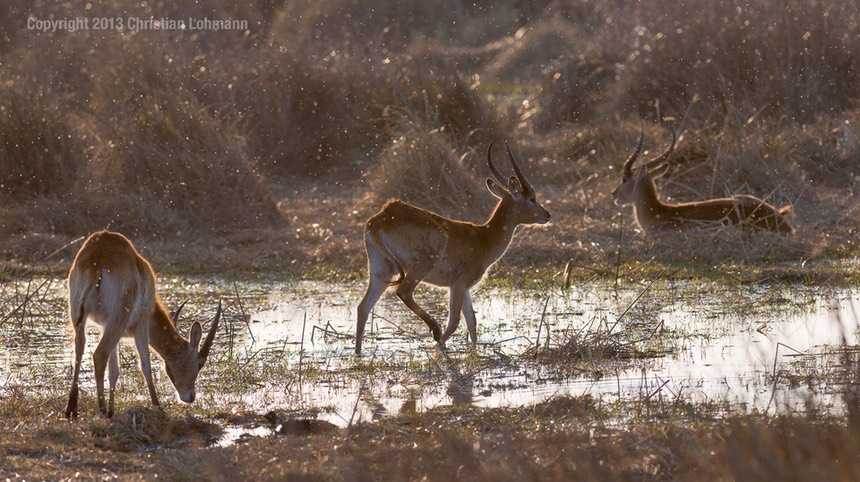
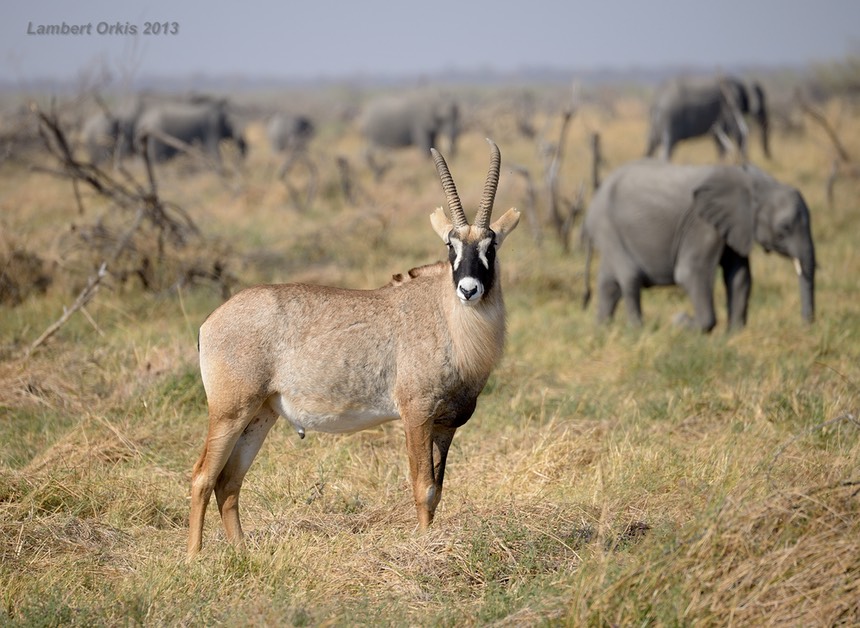
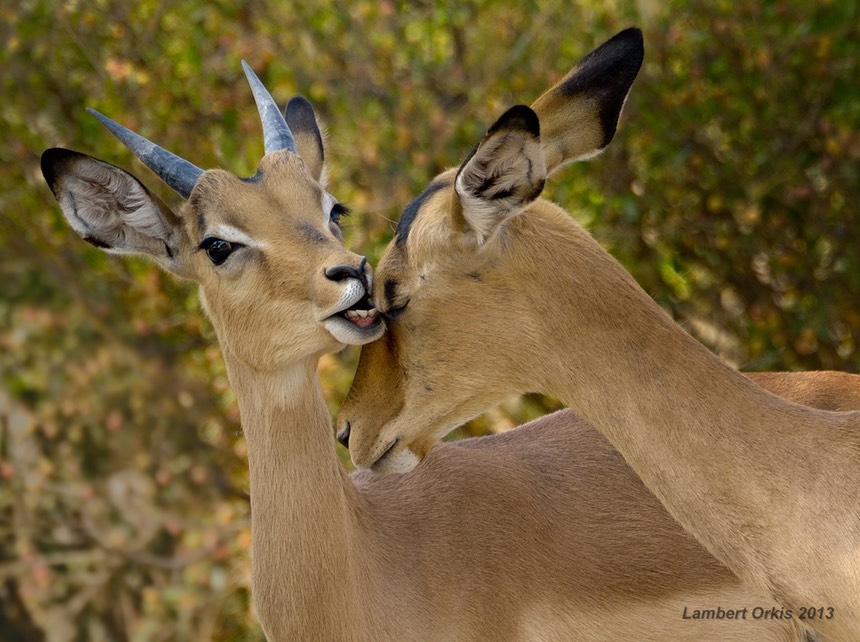
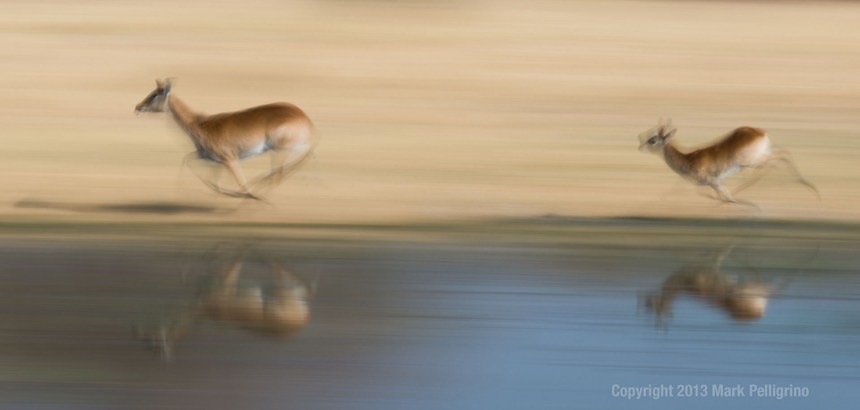
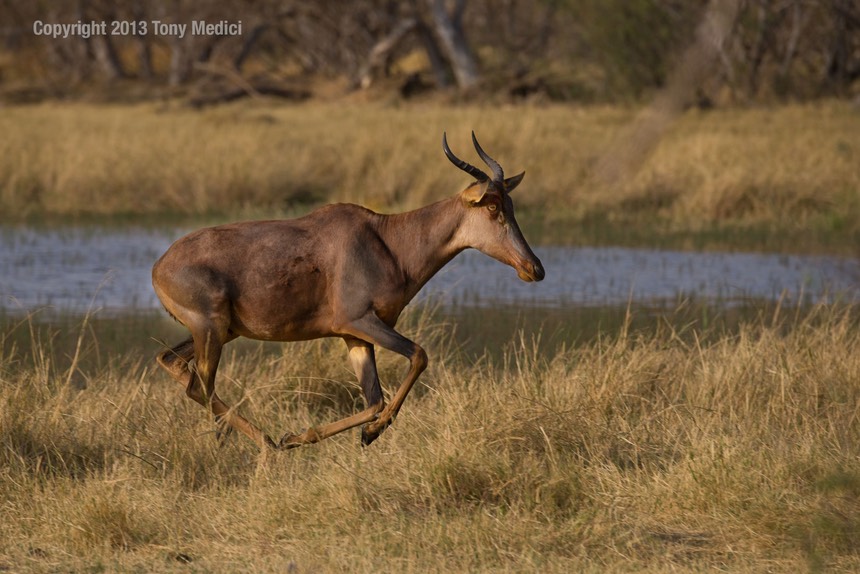
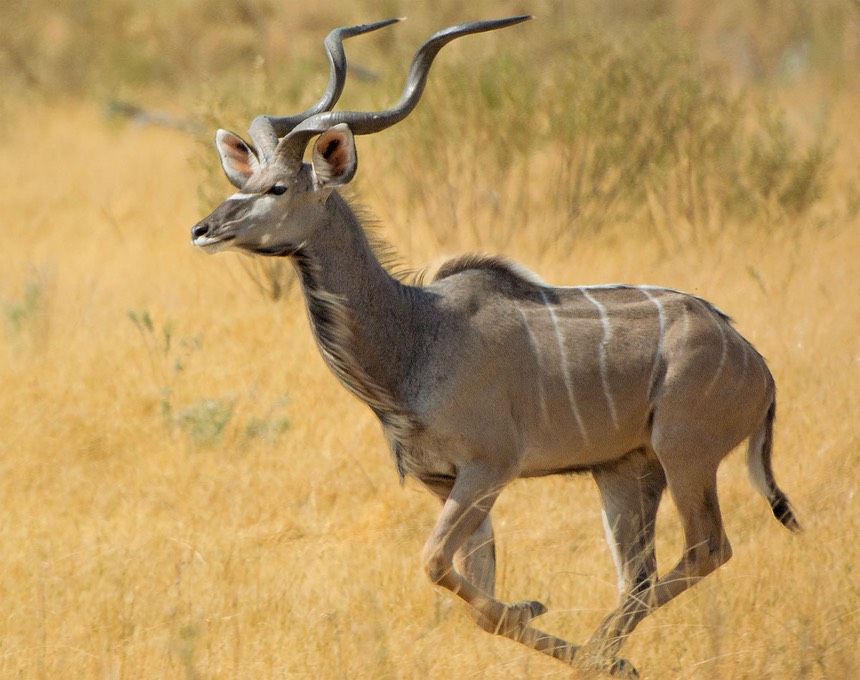
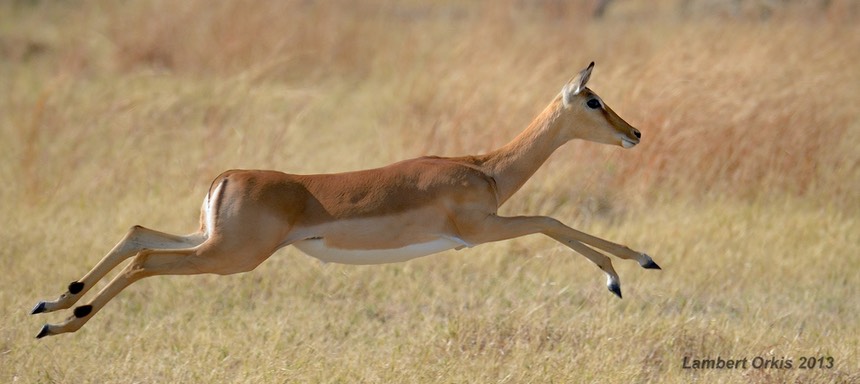
Okay, now that I've made my peace with the ungulates, it's time to move onto animals that are just as ubiquitous, but seem to always get lots of attention.
Now some of this has to due with my teaching assistant, Tony. He'll actually start physically shaking if we drive past a bird that could be photographed. If I'm in another vehicle driving along and I see one of our other Land Cruisers stopped but can't see what it is they might be photographing, I'm pretty sure that Tony must be in the vehicle and there's a bird on a stick somewhere nearby. More often than not, the bird in question is the lilac breasted roller:
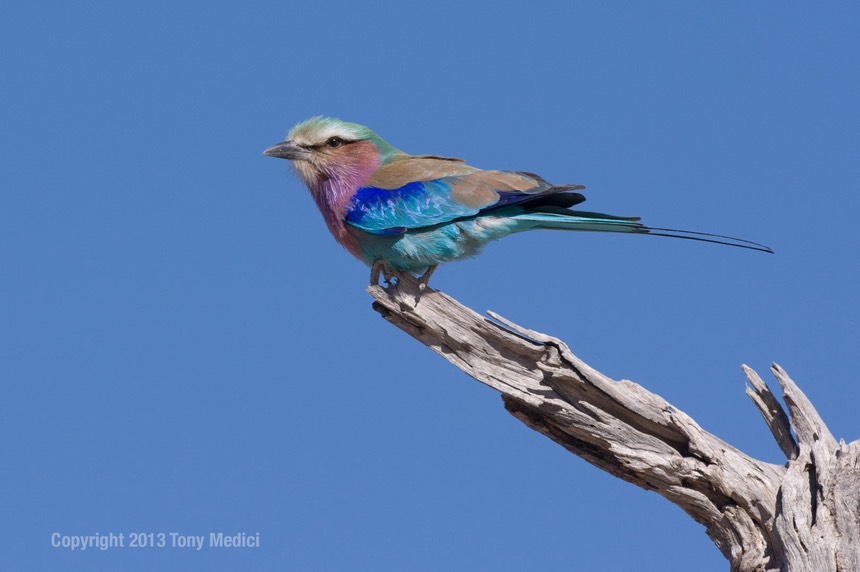
See? Bird. On stick.
There are other variations. Bird on ground, for instance:
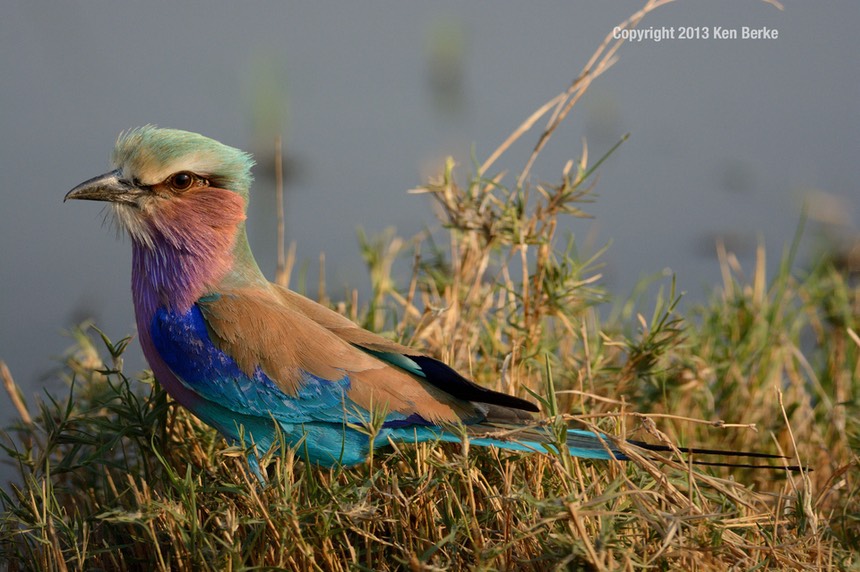
Or maybe bird on termite mount:
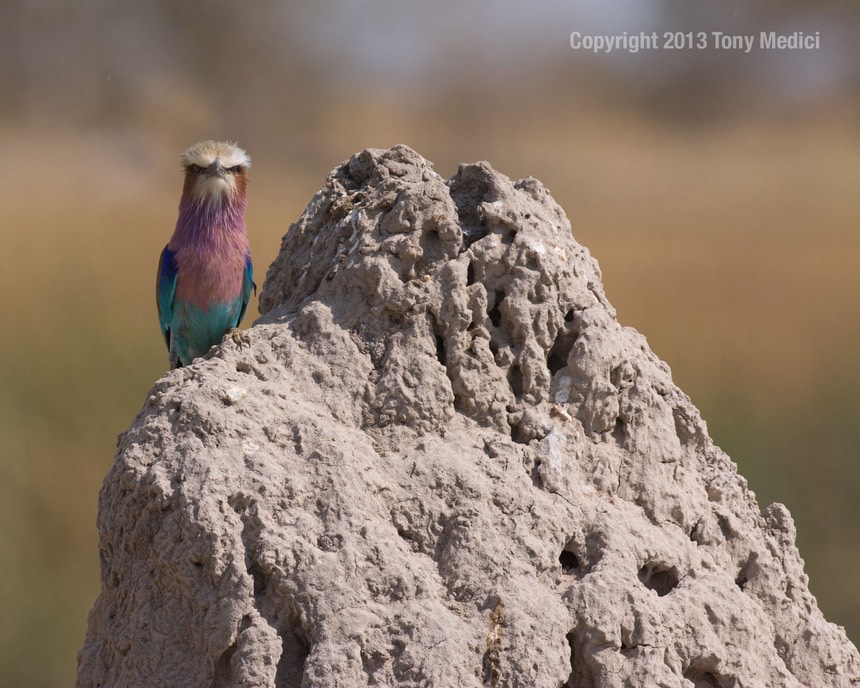
And rollers aren't the only pretty birds on sticks you'll see in Botswana:

I could go on, and on, and on with variations of this. Birds may be the second most photographed thing at these workshops after elephants.
Now obviously these are pretty birds, so everyone is going to take bird on a stick photographs. If they can get them.
Many of these are small birds. Moreover, I've grouped them together with the antelope for a reason: they share a common trait. Basically, you drive up to them while they are posing very nicely. For about three seconds, they'll hold that pose. Just for the heck of it sometimes I'll start counting out loud when we stop for antelope and birds: thousand one, thousand two, thousand three, off they go. I rarely get beyond five unless we're fairly distant from the animal/bird. The problem with these attractive birds is that they're small, so stopping at a distance would mean a 1000mm+ lens. Most of these shots are 400mm and 500mm, and cropped a bit at that.
This is one of the reasons why I mentioned earlier about being ready before the vehicle stops. You don't have a lot of time. You certainly don't have time to check your settings, change lenses, replace a battery, or anything that takes more than three seconds. I want to be ready to shoot within a second of the actual stop. Why is that? Because:
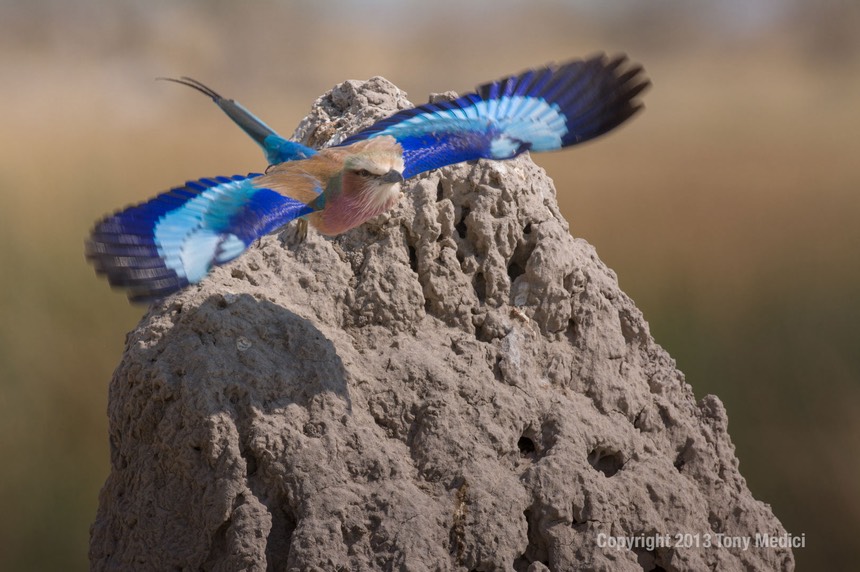
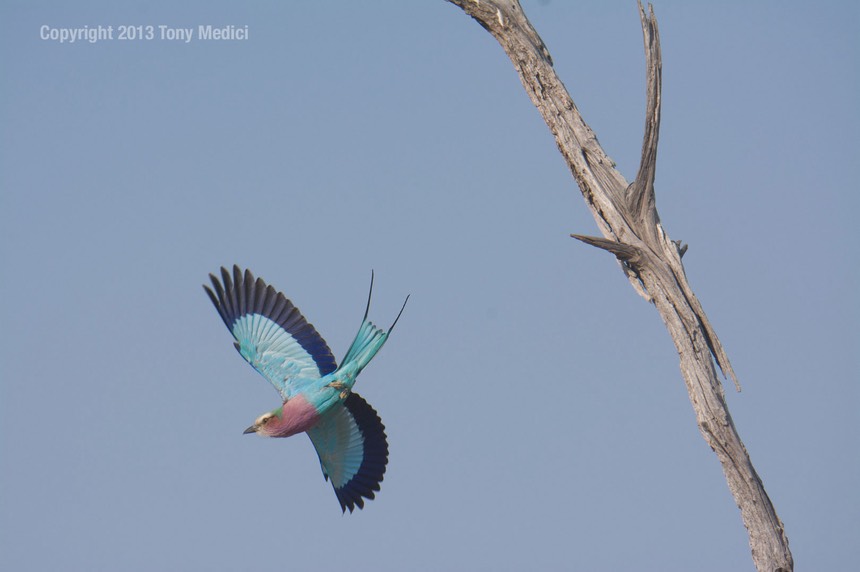
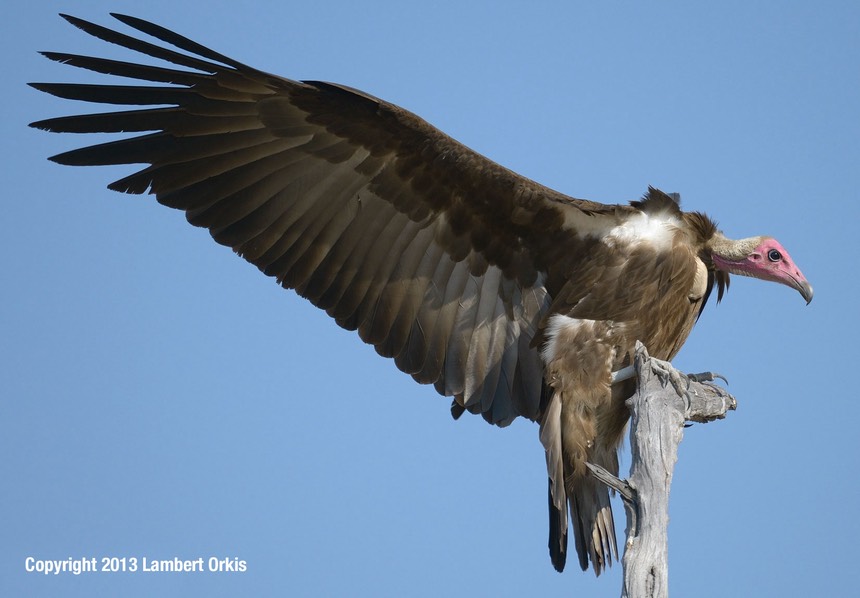
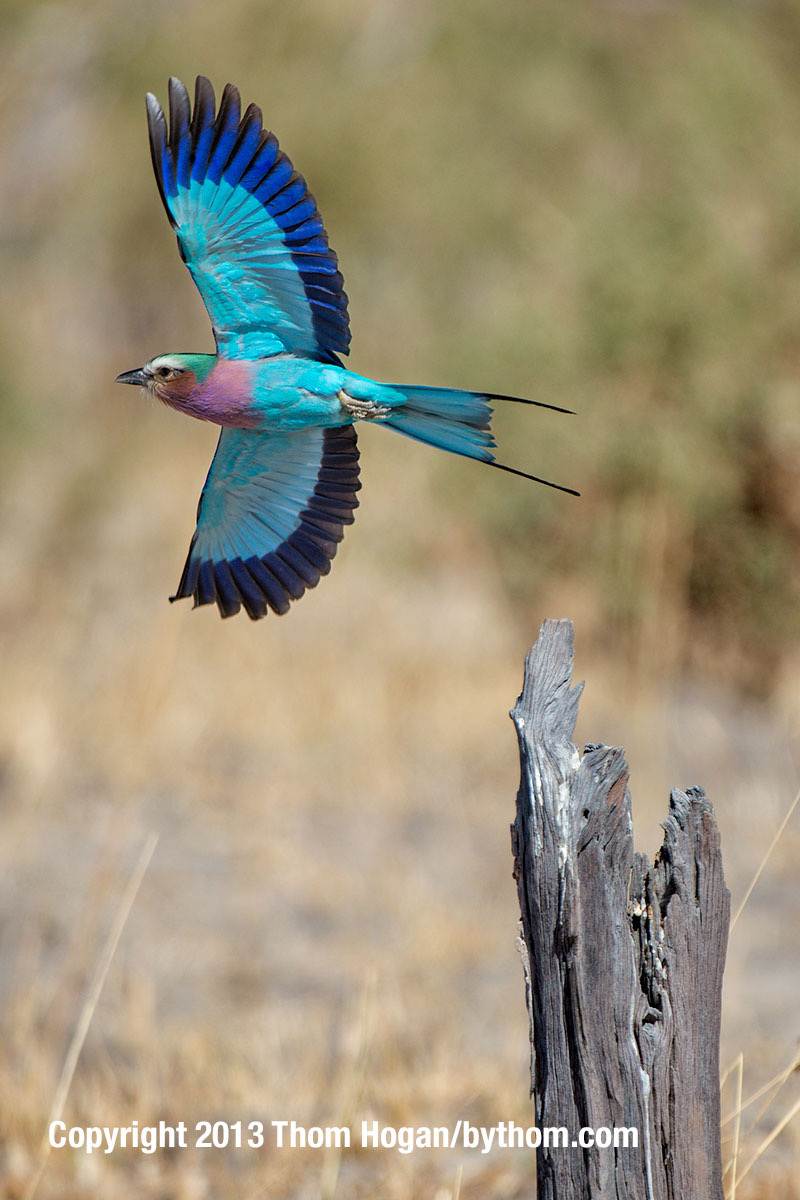
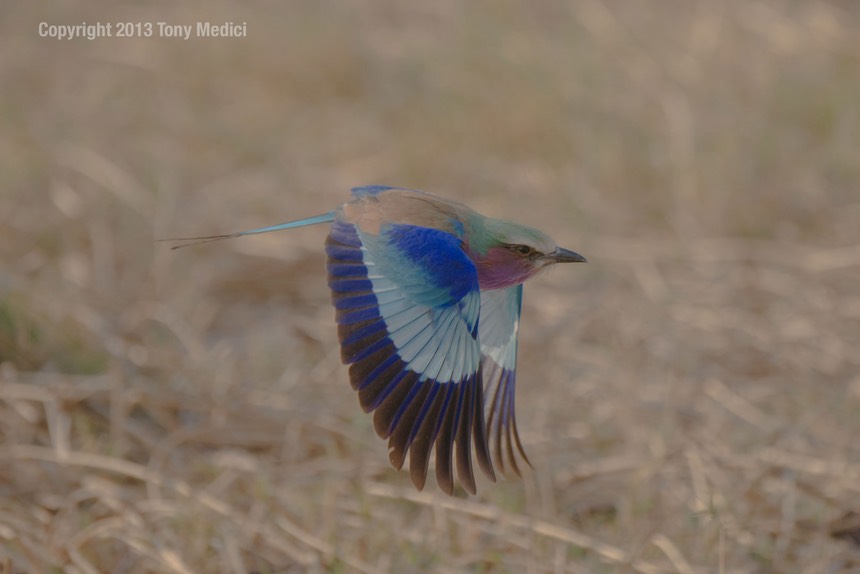
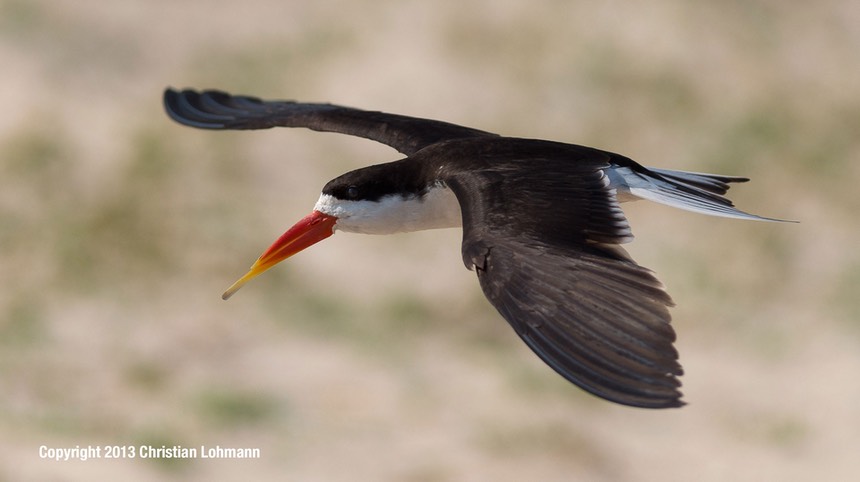
Birds on a stick quickly turn into birds in the air (the last one, above, started as bird on sandy beach). And if these birds are interesting just sitting there, they are almost always even better looking in the air (by the way, have you figured out how the "roller" part of the name got attached to those lilac breasted birdies?).
As I wrote in a previous Botswana workshop blog, I don't shoot continuous frame on these bird takeoff and flight images. I've noticed that Tony has started taking my advice and backed off a bit from the full on spray-and-pray technique, too. Especially with rollers you need to do two things: frame loosely, and time the roll. The first is because, unlike big birds such as the eagles, a roller can pretty much take off in any direction and it can change direction immediately. The tighter you are in composition, the more likely you start your pan with the bird but it changes directions faster than you can. Second, those rolls come fast and with bird in flight shots it is all about wing position. An "almost" position simply never wins over the "perfect" position. At 1/1000 of a second shutter speed, 8 fps means you missed 992/1000ths of the second. How likely is it the perfect wing position was in that rather than the 8/1000ths you captured?
But that 8 fps has other tolls: focus and framing. The two interact, especially with the busy backgrounds we have in Botswana. If—and that's a mighty big if—you can keep the bird precisely framed in your pan at 8 fps, the focus system has a chance. The more the bird varies in framing point during your pan, the less chance it has, especially if you haven't set the Focus Tracking with Lock-On value to Long (or at least away from Short or Off). Conspiring against you is the viewfinder blackout time.
The D3 and D4 have very short blackout times, around 75ms. Some of the prosumer bodies go as high as 110ms, and the consumer bodies can be considerably more. By "blackout" that means that no view of the framing area can be seen and the focus system isn't getting information.
So let's add things up. 8 fps x 75ms = 3/5ths of a second. That's right, for 3/5ths of a second the focus system isn't getting information and you're not seeing anything. And those rollers? They roll. I've seen them change directions two or three times in a second. How are you going to follow that? How is the system going to be able to focus on that?
I shoot one shot only. I see the frame 5/5ths of a second as does the focus system, at least until I press the shutter release. The likelihood that I follow the direction and roll, especially backed off a little bit in terms of tightness, is high.
That's not to say that you can't use continuous shooting methods with higher frame rates, only that my expectation is going to be that you have a lot of missed shots when you do. You're gambling on the law of averages, not controlling the situation. Personally, I'm not much of a gambler. The odds are usually stacked against you. I prefer stacking them in my favor.
And no matter which choice you make—spray-and-pray or targeted release—the only way to get to Carnegie Bird Hall is practice, practice, practice.
